| Category |
Albums |
Files |
|
4 |
88 |

|
| Icarus Golden AgeCommercial addons for Microsoft Combat Flight Simulator and Flight Simulator 2002/2004 |
|
2 |
9 |

|
| 97 files in 6 albums and 2 categories with 0 comments viewed 54,889 times |

 |
Random files |
 |
|
 |
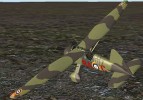
Westland Lysander mkIIIa RAF340 viewsmkIIIa RAF - model for cfs2 - fs2004 - fs2002 simulator, on sale at Icarus:
http://www.icarusgold.com/Lysander.htm
|
|
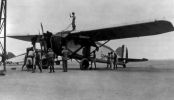
Caproni Ca.101702 viewsThis light bomber for 'colonial' warfare was used in the invasion of Ethiopia. It was a larger development of the Ca.97.
|
|
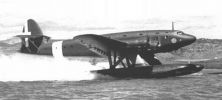
CANT Z 511 Long Range Hydroplane779 viewsThe Cantz 511 Long Range Cargo Hydroplane was first designed by Fillipo Zappata. The first flight took place in Monfalcone (Trieste, north-eastern Italy) in October 1940. It's first operational start took place in February 1942 (Italian territory). On January 1942, the hydroplane had to be employed on different long range routes, as the war against the United States prevented the civil use of CANTZ511 in the Atlantic area. Some had the odd idea of a spectacular mission in the skies of New York, launching one ton of tri-coloured leaflets. Some others thought about a non-stop Rome-Buenos Aires raid (8000 km!). None of these projects was carried out. And it was a real pity, as the test pilot Mario Stoppani - between the end of February and the beginning of March 1942, during the last trials - succeeded in taking off and landing (full loaded) with very rough sea, with 1.5 metres high waves and winds blowing at 55-65 kmh.
|
|
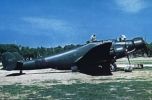
CANT Z 1007536 viewsThe three-engine formula, much developed by Italian manufacturers, had another noteworthy representative in the CANT Z. 1007, the bomber that, together with the SM.79 and BR.20, constituted the Regia Aeronautica's standard equipment during the conflict. A total of 560 aircraft were built in three production series from 1939 to 1943. The Alcione was widely used on all fronts, proving to be an effective aircraft, despite the emergence of problems of structural weakness in extreme climates, such as Africa and Russia, due to its being built entirely of wood. in 10/40, the Z.1007 was largely used in the invasion of Greece, followed by service in the Mediterranean, North Africa and especially against Malta. On the Russian front, the use of the three engine bombers was sporadic and intermittent. At the time of the armistice, the few remaining Z.1007's were split about evenly between the pro-Axis and Co-Belligerent air forces. At its height, the Z.1007 was used by 4 Stormos, 7 Groups and 2 squadrons.
|
|
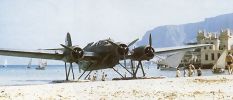
z506-01836 views
|
|
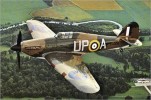
HAWKER HURRICANE Mk IIB391 viewsThe Hurricane bore the brunt of the fighting during the Battle of Britain &, of the 14,00 built, only three examples remain airworthy. This particular machine is painted to represent the aircraft of the late Squadron Leader Archie McKellar
|
|
|
 |

 |
Last additions |
 |
|
 |
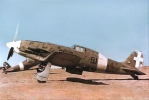
Macchi C.202 Folgore1439 viewswas a World War II fighter aircraft built by Macchi Aeronautica and operated by the Regia Aeronautica (RA; Royal (Italian) Air Force). Macchi aircraft designed by Mario Castoldi received the "C" letter in their model designation, hence the Folgore is referred to as the MC.202. Considered one of the most beautiful fighters to fly with wartime Axis forces, the C.202 was a development of the earlier C.200 Saetta, with a more powerful German Daimler-Benz DB 601 engine and with an extremely streamlined fuselage.[1] Undoubtedly the best wartime fighter to serve in large numbers with the Regia Aeronautica,[2] the Folgore operated on all fronts.[3]
The Folgore went into service with the Regia Aeronautica in July 1941 and immediately proved to be an effective and deadly dogfighter.[4][5] The Australian ace Clive Caldwell, who fought a wide variety of German, Italian and Japanese fighters during 1941–45, later stated that the C.202 was "one of the best and most undervalued of fighters".Jan 12, 2011
|
|
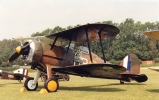
Gloster Gladiator1035 viewsThe Gloster Gladiator (or Gloster SS.37) was a British-built biplane fighter. It was used by the Royal Air Force (RAF) and the Royal Navy (as the Sea Gladiator variant) and was exported to a number of other air forces during the late 1930s. It was the RAF's last biplane fighter aircraft and was rendered obsolete by newer monoplane designs even as it was being introduced. Though often pitted against more formidable foes during the early days of the Second World War, it acquitted itself reasonably well in combat.
The Gladiator saw action in almost all theatres during the Second World War, with a large number of air forces, some of them on the Axis side. The RAF used it in France, Norway, Greece, the defence of Malta, and the brief Anglo-Iraqi War (in which the Royal Iraqi Air Force was similarly equipped). Other countries deploying the Gladiator included China against Japan, beginning in 1938; Finland (along with Swedish volunteers) in the Winter War and the Continuation War; and Norway, Belgium, and GreeceJan 12, 2011
|
|
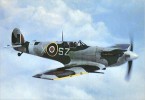
Supermarine Spitfire Mk Vb960 viewsThe Mk V was produced in greater numbers than any other single mark of Spitfire. It was the main version of the fighter during 1941, replacing the Mk I and II in service in time to take part in the first British counterattacks over France. During the summer of 1941 it held an advantage over the Bf 109, but in September 1941 the Fw 190 made its operation debut, and the Mk V found itself outclassed. Despite this, it remained the main RAF fighter until the summer of 1942, and the low level LF.Mk V remained in use into 1944.Jan 10, 2011
|
|
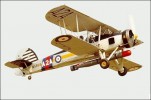
Fairey Albacore1038 viewsThe Fairey Albacore is a single-engine carrier-borne biplane torpedo bomber built by Fairey Aviation between 1939 and 1943 for the Fleet Air Arm. It had a three-man crew and was designed for spotting and reconnaissance as well as delivering bombs and torpedoes. The Albacore, popularly known as the "Applecore", was conceived as a replacement for the ageing Fairey Swordfish, which had entered service in 1936. However, the Albacore served with the Swordfish and was retired before it, being replaced by the monoplane Fairey Barracuda torpedo bomber.
The Albacore prototypes were built to meet Specification S.41/36 for a three-seat TSR (torpedo/spotter/reconnaissance) for the FAA. The first of two prototypes flew on December 12 1938 and production of the first batch of 98 aircraft began in 1939. Early Albacores were fitted with the Bristol Taurus II engine and those built later received the more powerful Taurus XII.
No. 826 Squadron FAA was specially formed to operate the first Albacores in March, 1940. Carrier-based squadrons began operating the Albacore in 1941. Eventually there were 15 FAA squadrons equipped with the plane which operated widely in the Mediterranean. Albacores participated in the Battle of Cape Matapan and the fighting at El Alamein as well as supporting the landings at Sicily and Salerno. During the period September 1941 to end of June 1943 No. 828 Squadron FAA, Hal-Far, Malta, operated a squadron of TSR Fairey Albacores under some of the most severe blitz conditions imaginable during the siege of Malta, mainly against Italian shipping and shore targets in Sicily.
In 1943 the Albacore was replaced by the Barracuda. The last Albacore squadron, No. 841, disbanded in late 1943. The Royal Canadian Air Force took over the Albacores and used them during the Normandy invasion.Sep 18, 2006
|
|
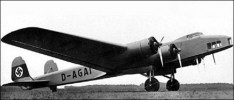
Dornier Do 191148 viewsAlong with the Junkers Ju 89, the Do 19 was developed as part of the "Ural Bomber" program championed by Gen. Walther Wever who forsaw the need for long range strategic bombing capability. When Gen. Wever was killed in April of 1936, the goal of a strategic bombing capability died with him. On April 29, 1937, the Ural-Bomber bomber program was cancelled by Kesselring in spite of protests. Kesselring felt the production and development resources would be better used to develop and build tactical bombers such as the Do 17 and He 111. This philosophy would later haunt and severely handicap the Luftwaffes ability to strike at Russia's production capabilities.Sep 18, 2006
|
|
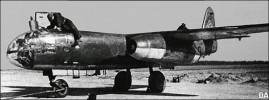
Arado Ar 2401071 viewsThe German Arado 234 was the very first purpose-built jet bomber. While the Ar-234 had very little influence on the outcome of World War II, being much too late and too few in number, it had influence on later aircraft designs. The Ar-234B could be configured either as a bomber or reconnaissance aircraft. It weighed about 5.2 tonnes (11,464 pounds) empty, and about 8.43 tonnes (18,850 pounds) fully loaded. Maximum bomb load was about 1.5 tonnes, carried externally. When used as a reconnaissance aircraft, the AR-234B carried a pair of 300 liter (79 US gallon) drop tanks in place of the bombs.
The powerplants consisted of a pair of Junkers Jumo 004B turbojets, with 900 kilograms (1,980 pounds) thrust each. Maximum speed without bombs or drop tanks was 740 KPH (460 MPH) at 6,100 meters (20,000 feet), but the speed dropped to as low as 660 KPH (410 MPH) with external loads. The prototypes had actually been a good 30 KPH faster than the Ar-234B, due to the more slender fuselage allowed by the lack of landing gear. Tricycle landing gear was fitted. As the Ar-234 landed at high speed, it had a drag chute as standard equipment; it was one of the first aircraft to do so. The rounded nose of the aircraft was covered with plexiglas, giving the pilot an excellent view to the front, but no view to the back except through a periscope. The periscope, which was not provided in the Ar-234 prototypes, also served as a sight for dive-bombing attacks. As a bomber, the Ar-234 was something of a failure. It could not carry enough of a bombload to match the destructive power of the big heavy bombers that were smashing the Reich. However, as a reconnaissance aircraft it proved able to bring back intelligence from airspace denied to prop-driven aircraft.
There were also a number of innovations in the Ar-234 that would be seen in later aircraft. Sep 18, 2006
|
|
|
 |

|